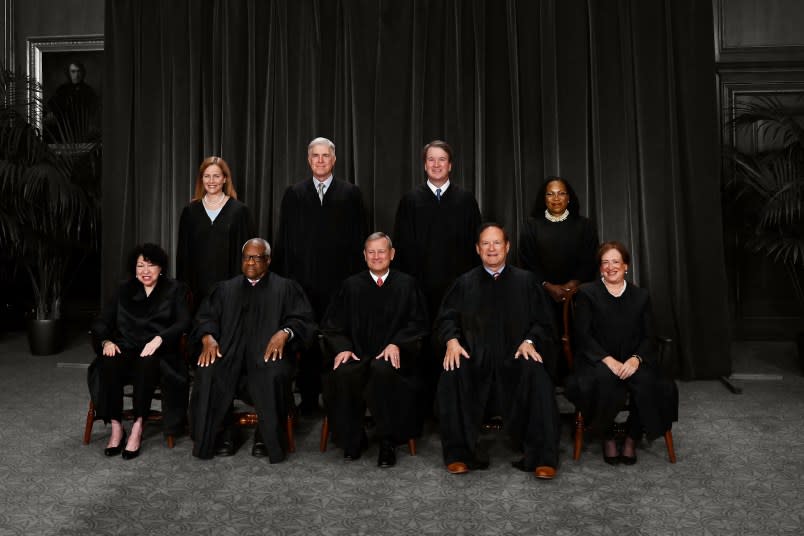Supreme Court Lets Map That Two Courts Found To Violate Voting Rights Act Stand

Conservative justices on the Supreme Court Tuesday let a Galveston County, Texas map — which both federal district and appellate courts have found to be a racial gerrymander — stand Tuesday without explaining their decision.
The three liberals dissented.
The case may seem niche, as it concerns the map governing the election of county commissioners in Galveston, but it presses on a glaring threat to the Voting Rights Act.
U.S. District Judge Jeffrey Brown, a Donald Trump appointee, ruled that the map was racially discriminatory in October and ordered a redraw. His decision was affirmed unanimously — but reluctantly — by a 5th Circuit Court of Appeals panel, which wrote that the map was a violation of the VRA as it stands, but that the case law is wrong. The judges argued that the VRA does not actually protect districts composed of multiple minority groups (rather than one minority group), and asked the 5th Circuit to take up the case en banc and reverse its own precedent.
There is a circuit split on the issue of VRA protection of multicoalitional districts, where minority groups lack significant voting power by themselves, but can swing the seat if they vote the same way. These districts are becoming more electorally powerful, particularly as minority voters move into suburbs surrounding major cities.
The 5th Circuit agreed to take up the case en banc. After some back and forth, the court ultimately ruled that it was too close to the election to use new maps — despite the lower court’s ordering of a remedial map to be drawn two months ago — an invocation of the Purcell principle that right-wing judges enjoy using sporadically. That means that the map, which the district judge and 5th Circuit panel have both found to be a racial gerrymander, stands.
Black voters in Galveston appealed to the Supreme Court to vacate that stay and let them use new maps, but the Court’s conservatives rejected that plea on Tuesday.
Justice Elena Kagan wrote for the dissenting liberals.
“The Fifth Circuit’s stay itself disrupted the status quo — an election map concededly lawful under Circuit precedent and nearly identical to the maps that have governed the election of Galveston County’s commissioners for decades,” Kagan wrote. “In imposing a different map, acknowledged to violate current law — on the theory that the Circuit might someday change that law — the Court of Appeals went far beyond its proper authority.”
The full 5th Circuit plans to hear oral arguments on the critical VRA question in May 2024.
This question is coming to a head in another, even more pressing case. Georgia Gov. Brian Kemp (R) signed new congressional maps into law on Friday, after a federal judge ordered the legislature to craft an additional Black-majority district. Judge Steve Jones explicitly warned the Republican lawmakers that “the State cannot remedy the Section 2 violations described herein by eliminating minority opportunity districts elsewhere in the plans.”
But Georgia Republicans did just that. To retain their current 9-5 seat advantage in the House, they obliterated Rep. Lucy McBath’s (D-GA) district, a multicoalitional district where a combination of Black, Latino and Asian voters typically elect Democrats.
Plaintiffs in the case formally lodged their objection to the map on Tuesday. A hearing is scheduled for December 20.
“Rather than follow this Court’s clear guidance, the General Assembly (1) shuffled Black voters from outside of the vote-dilution area into the new majority-Black district, while excluding over 50,000 Black voters from within the vote-dilution area from any remedy whatsoever, and (2) dismantled CD 7, a majority-minority district anchored in majority-minority Gwinnett County that it had no need to alter — let alone eliminate — in creating the new majority-Black district in west-metro Atlanta,” the plaintiffs wrote, fuming that the map “makes a mockery” of the court proceedings.
Read the Supreme Court’s denial of stay here:

